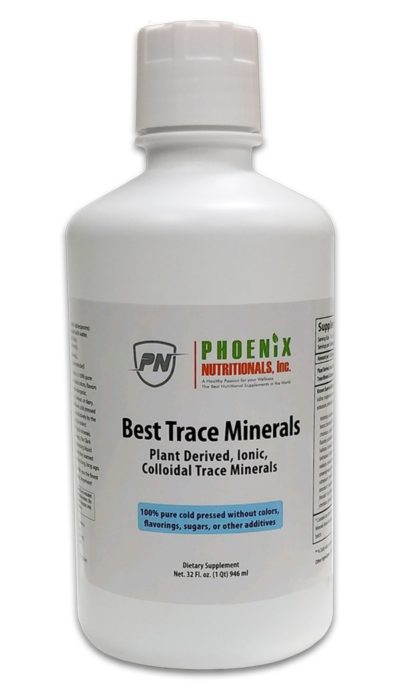

So we get minerals when we eat those plants, or when we eat animals who’ve eaten those plants.

Plants bring up minerals from the soil to help build complex molecules they need for growth, respiration and photosynthesis. The other safer, normal option is to eat the right food.

Trace minerals include iron, chromium, copper, zinc, iodine, manganese and selenium. But “trace” minerals are also important, though we need them in much smaller amounts. Sodium, potassium, phosphorus, magnesium, sulfur and calcium are minerals we are probably more familiar with. For this reason, minerals can have a significant impact on blood pressure, weight management, cancer prevention, depression, pain, PMS and digestion, to name a few. If your body doesn’t get enough, or gets too much, of any of the critical nutrients, you increase your risk of disease or other medical problems. They are that critical to your body’s daily functioning. There literally is no bodily process, on either the cellular or systemic level, that can operate at its best, or even continue to operate efficiently for that matter, without the right amounts of minerals. Minerals help your body carry out its daily functions and processes in the most efficient and beneficial way possible. Not many of us read cereal boxes and think, “great, I’m getting some zinc today.” What do these minerals do, and where do they come from? Iron, chromium, copper, zinc, iodine, manganese, magnesium, selenium- are we talking about science class or my dinner? Trace mineral cardiovascular disease copper iron selenium zinc.By Franz Gliederer, MD, MPH and Joy Stephenson-Laws, JD (Proactive Health Labs) We will also clarify their clinical applications, benefits, and harms in CVDs prevention. In this review, we discuss the role of dietary and/or supplemental iron, copper, zinc, and selenium on cardiovascular health. Given the existing controversies, large, well-designed, long-term, randomized clinical trials are required to better examine the effects of trace mineral intake on cardiovascular events and all-cause mortality in the general population. Thus, a J- or U-shaped relationship between the transition minerals and cardiovascular events has been proposed. While deficiency of these trace elements can cause cardiovascular dysfunction, several studies have also shown a positive association between metal serum levels and cardiovascular risk factors and events. Since their pro-oxidant or antioxidant functions can have different effects on cardiovascular health. However, there is controversy over the effects of dietary and supplemental intake of these metals on cardiovascular risk factors and events.

Transition metals, such as iron, zinc, copper and selenium, play a major role in cell metabolism. Imbalances in electrolyte minerals are frequent and potentially hazardous occurrences that may lead to the development of cardiovascular diseases (CVDs). Minerals play a major role in regulating cardiovascular function. 10 j Isfahan Cardiovascular Research Center, Cardiovascular Research Institute, Isfahan University of Medical Sciences, Isfahan, Iran.9 i Division of Cardiology, Faculty of Medicine, The University of British Columbia, Vancouver, Canada.8 h Department of Community Nutrition, School of Nutrition and Food Science, Isfahan University of Medical Sciences, Isfahan, Iran.7 g Department of Community Nutrition, School of Nutritional Sciences and Dietetics, Tehran University of Medical Sciences, Tehran, Iran.6 f Obesity and Eating Habits Research Center, Endocrinology and Metabolism Molecular, Cellular Sciences Institute, Tehran University of Medical Sciences, Tehran, Iran.5 e Human Nutrition Unit, Department of Biochemistry & Biotechnology, IISPV, School of Medicine, Rovira i Virgili University, and CIBER Obesity and Nutrition, Reus, Spain.4 d Centre of Excellence in Cancer Prevention, Faculty of Medicine, School of Population and Public Health, The University of British Columbia, Vancouver, Canada.3 c Women's Cardiovascular Health, Department of Medicine, The University of British Columbia, Vancouver, Canada.2 b Interventional Cardiology Research Center, Cardiovascular Research Institute, Isfahan University of Medical Sciences, Isfahan, Iran.1 a Hypertension Research Center, Cardiovascular Research Institute, Isfahan University of Medical Sciences, Isfahan, Iran.


 0 kommentar(er)
0 kommentar(er)
